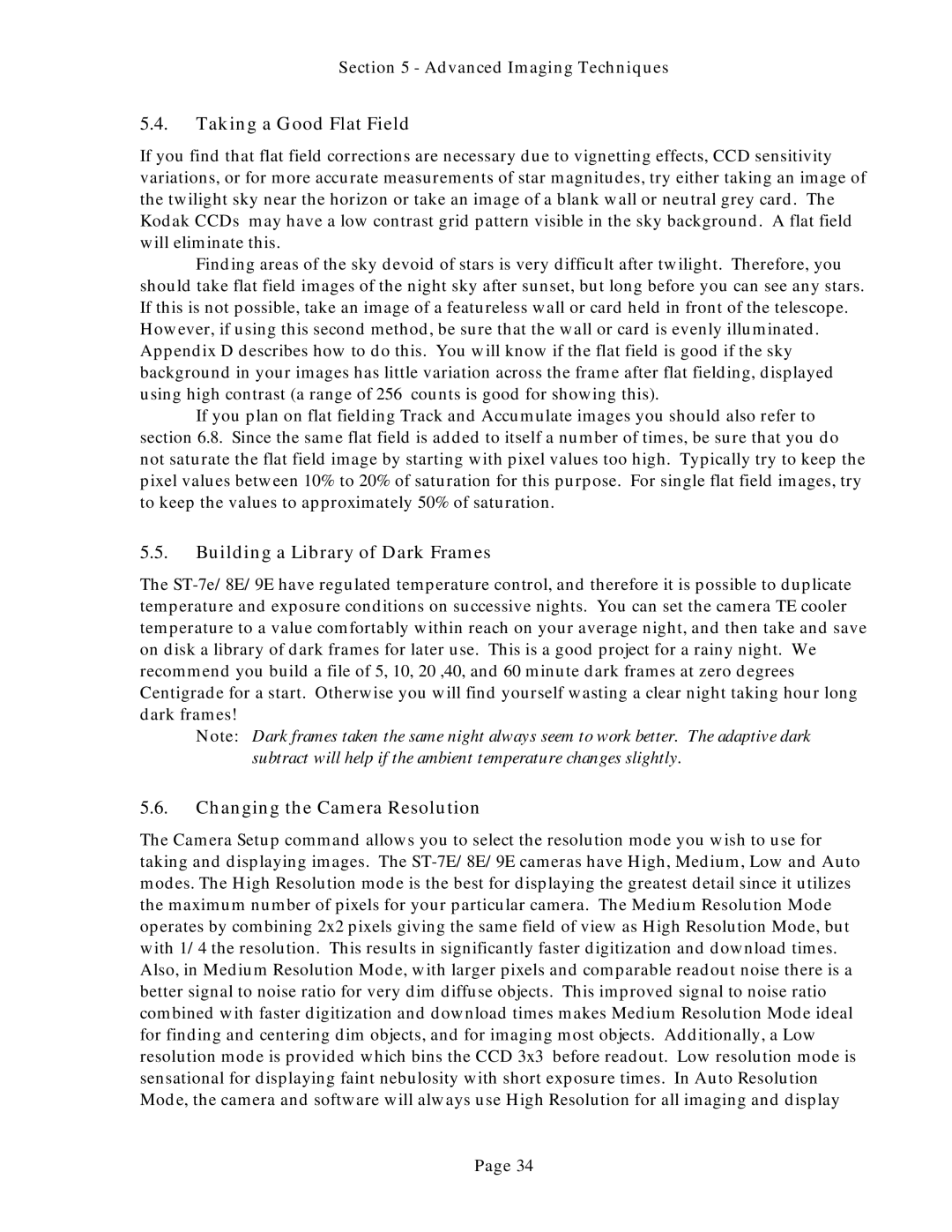Section 5 - Advanced Imaging Techniques
5.4.Taking a Good Flat Field
If you find that flat field corrections are necessary due to vignetting effects, CCD sensitivity variations, or for more accurate measurements of star magnitudes, try either taking an image of the twilight sky near the horizon or take an image of a blank wall or neutral grey card. The Kodak CCDs may have a low contrast grid pattern visible in the sky background. A flat field will eliminate this.
Finding areas of the sky devoid of stars is very difficult after twilight. Therefore, you should take flat field images of the night sky after sunset, but long before you can see any stars. If this is not possible, take an image of a featureless wall or card held in front of the telescope. However, if using this second method, be sure that the wall or card is evenly illuminated. Appendix D describes how to do this. You will know if the flat field is good if the sky background in your images has little variation across the frame after flat fielding, displayed using high contrast (a range of 256 counts is good for showing this).
If you plan on flat fielding Track and Accumulate images you should also refer to section 6.8. Since the same flat field is added to itself a number of times, be sure that you do not saturate the flat field image by starting with pixel values too high. Typically try to keep the pixel values between 10% to 20% of saturation for this purpose. For single flat field images, try to keep the values to approximately 50% of saturation.
5.5.Building a Library of Dark Frames
The
Note: Dark frames taken the same night always seem to work better. The adaptive dark subtract will help if the ambient temperature changes slightly.
5.6.Changing the Camera Resolution
The Camera Setup command allows you to select the resolution mode you wish to use for taking and displaying images. The
Page 34
